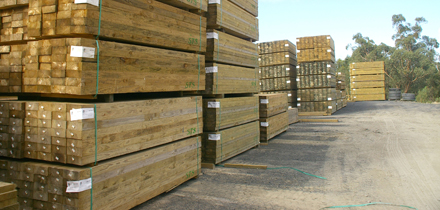
Softwood lumber prices have trended upward in the first six months 2016 because of higher demand and a weaker dollar. Sources: Timberbiz, Business Wire
Demand for softwood lumber has gone up in many markets around the world in 2016, resulting in a substantial increase in global lumber trade. With very few exceptions, the major importing countries have imported more lumber during the first six months this year than they did during the same period in 2015, according to estimates by the Wood Resource Quarterly (WRQ).
Demand for softwood lumber has gone up in many markets around the world in 2016, resulting in a substantial increase in global lumber trade. With very few exceptions, the major importing countries have imported more lumber during the first six months this year than they did during the same period in 2015.
Higher demand and a weaker US dollar resulted in generally higher lumber prices (in US dollar terms) worldwide in the first half of 2016 than in the 1H/15.
Lumber markets – North America
Demand for softwood lumber in the US has expanded continually so far in 2016. During the first five months of 2016, lumber consumption was 14.2% higher than during the same period in 2015.
The increased demand was predominantly met with higher production by sawmills in the US South, a substantial rise in import volumes from Canada (up 40%) and incrementally more shipments from Europe.
Lumber prices in the US have trended upward for most of 2016 with prices in August this year reaching their highest levels since early 2015.
Lumber markets – Northern Europe
Weaker currencies in the Nordic countries have resulted in more competitive prices for lumber in 2015 and 2016.
Prices in 2016 are among the lowest they have been since 2005. Finland is on pace to increase export volumes for the seventh consecutive year in 2016.
During the first five months, the export shipments were up almost 15% as compared with the same period in 2015.
The biggest increases have been to non-European countries including Egypt, Japan, China and Saudi Arabia, reports the WRQ.
Lumber markets – China
Lumber import prices to China from the two major supplying countries, Russia and Canada, have converged during 2016. Last year in July, Canadian lumber was sold at a premium of almost US$40/m3 over Russian lumber.
Despite lower prices for Canadian lumber, the country has not gained any market share this year – rather the opposite.
In 2016, Canadian supply has counted for 26% of the total import volumes, while Russia’s share has been approximately 59%.
Back in 2013, Canada was the major supplier and accounted for about 40% of the imports.
Lumber market – Japan
Housing starts in Japan have trended upward during the first six months of 2016 with wooden housing starts being 3.8% higher this year than during the same period in 2015. Demand for lumber has followed a similar trend.
Higher demand for wood has partly been met by an increase in the importation of lumber with the biggest increases coming from Austria, Finland and Sweden.
Prices for both imported and domestic lumber have not changed much in Yen terms over the past year, but with the strengthening Japanese currency, lumber prices in dollar terms have rapidly gone up since the beginning of the year.
Lumber market – Russia
The export shipments from Russia have continued to go up in 2016, with volumes during the first six months reaching 12% higher levels than in the same period in 2015.
By far the biggest increases in exports have been to Asian markets.
Very low production costs in Eastern Russia have resulted in major inroads for Russian sawmills in the Chinese market at the expense of primarily Canadian sawmills.
Lumber export prices in Russia have declined the past few years, but not at the same rate as prices for sawlogs, and as a result sawmills in Siberia have become some of the most profitable sawmills in the world.
Global lumber, sawlog and pulpwood market reporting is included in the 52-page quarterly publication Wood Resource Quarterly (WRQ).
The report tracks sawlog, pulpwood, wood chip, lumber and pellet prices, trade and market developments in most key regions around the world.
To subscribe go to www.woodprices.com





